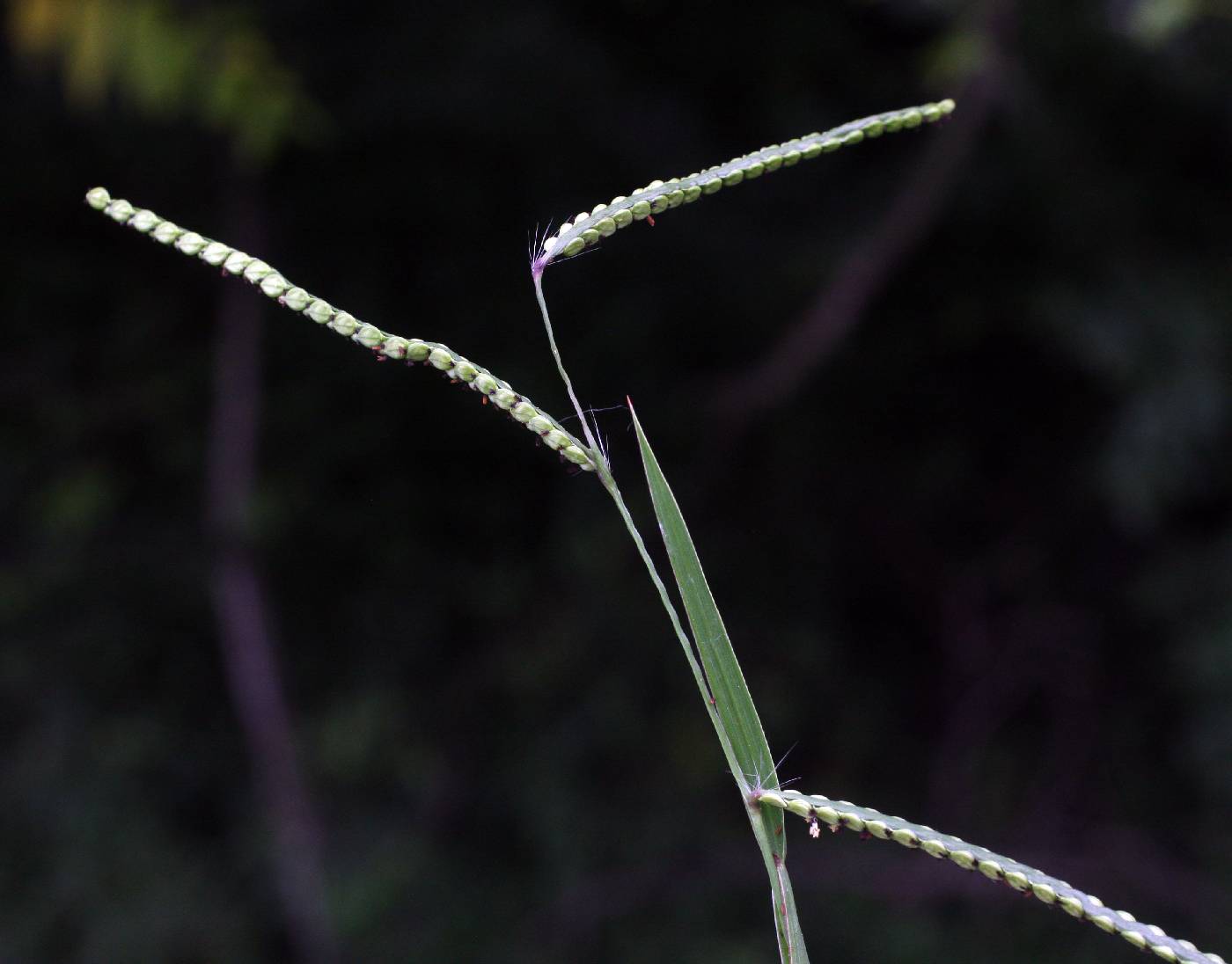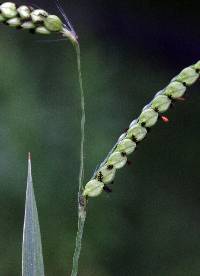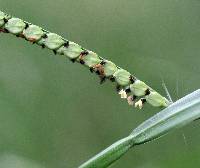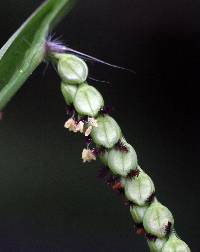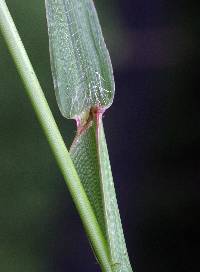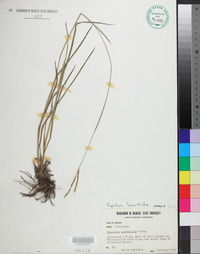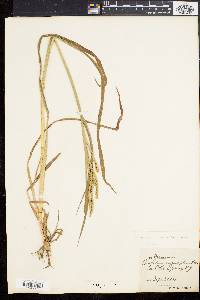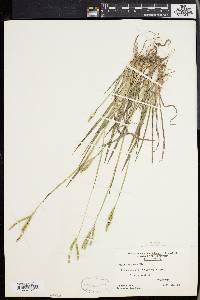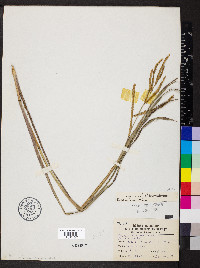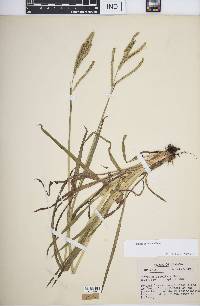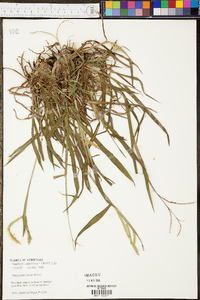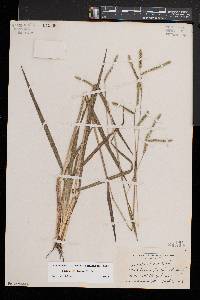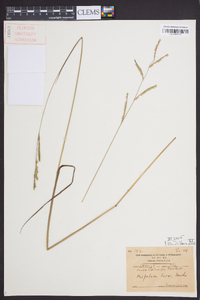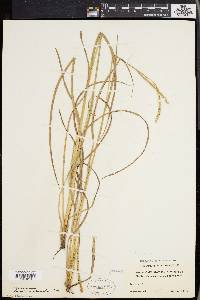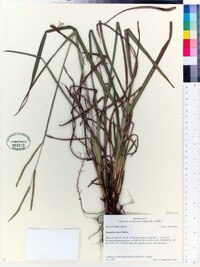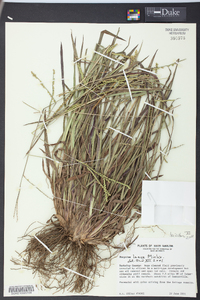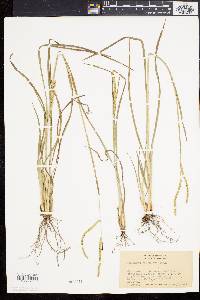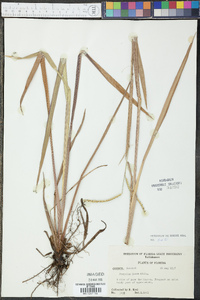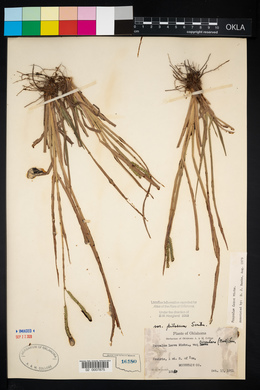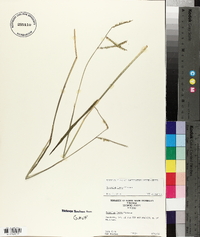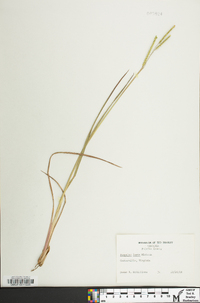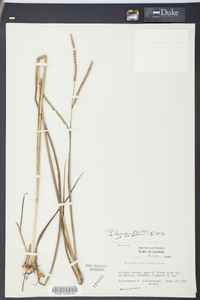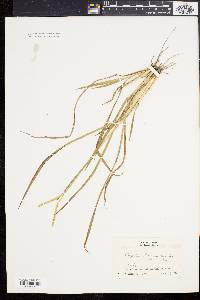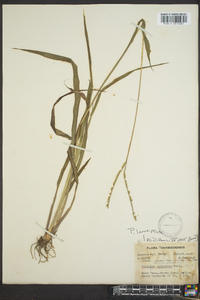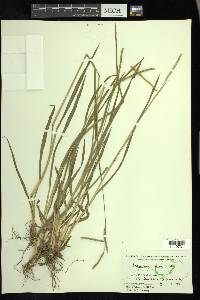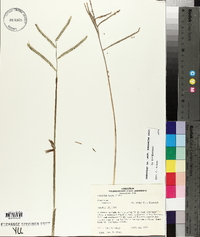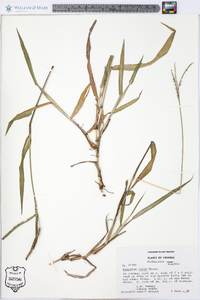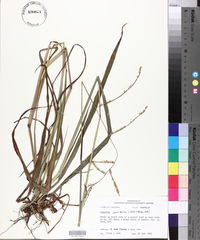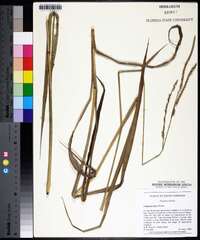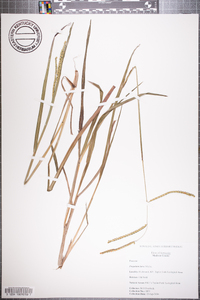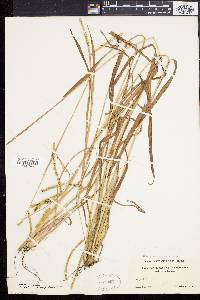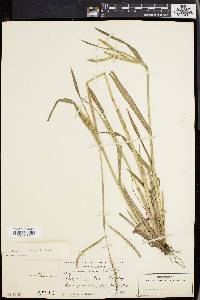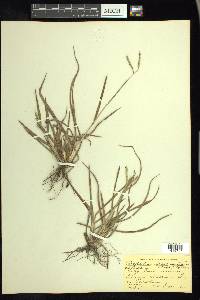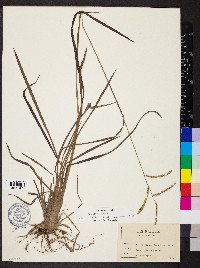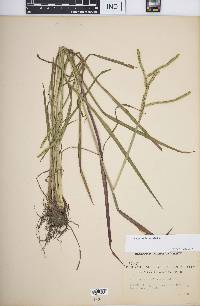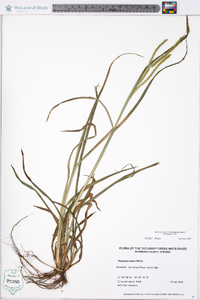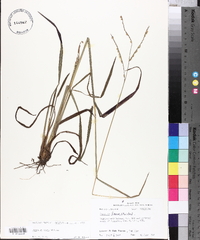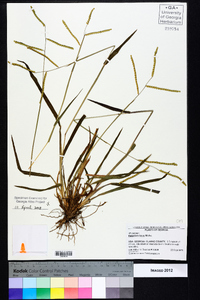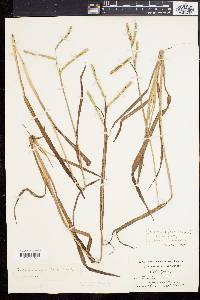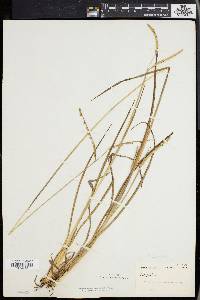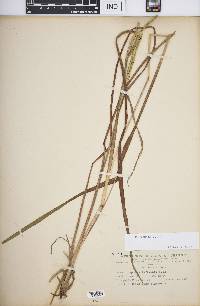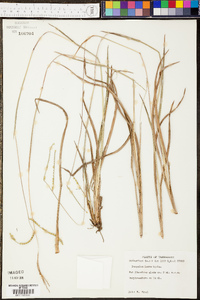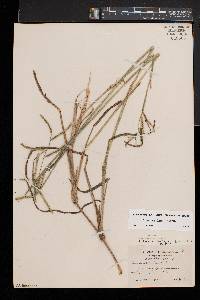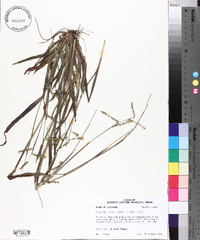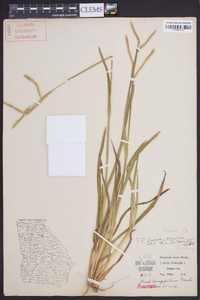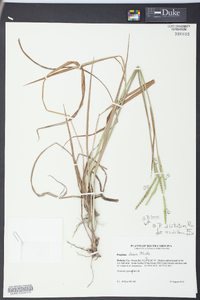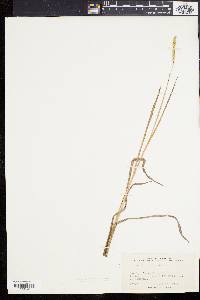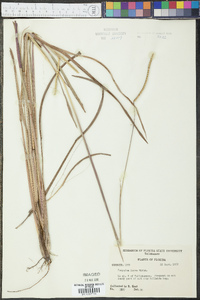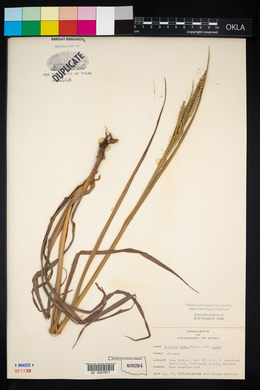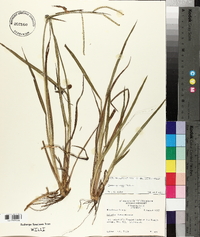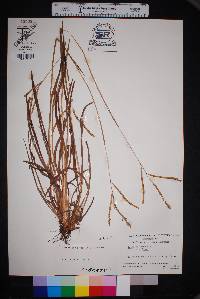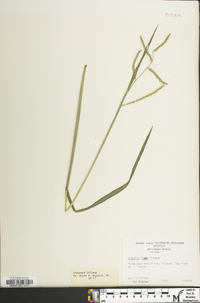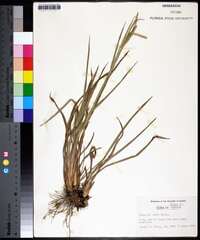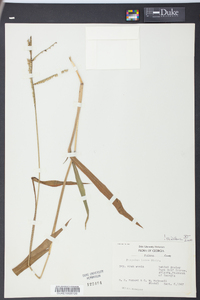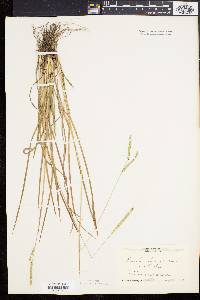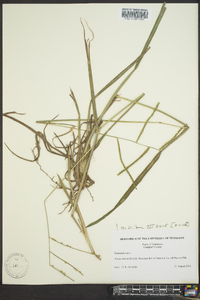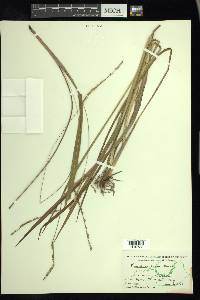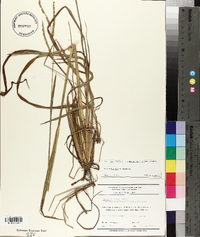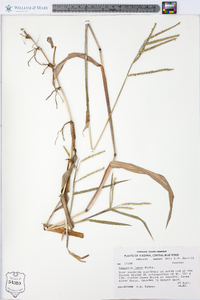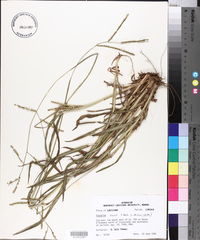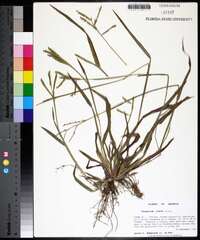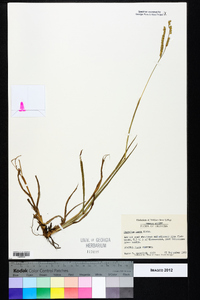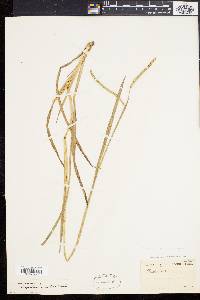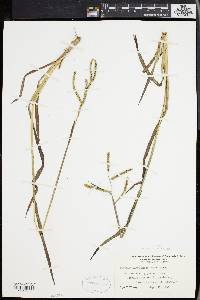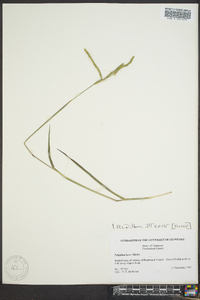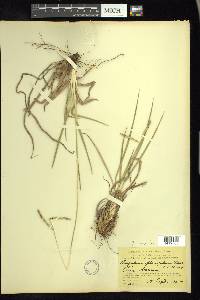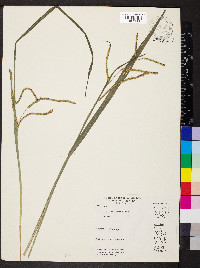Paspalum laeve
|
|
|
|
Family: Poaceae
Field Crown Grass, more...Field Paspalum
[Paspalum alternans Steud., morePaspalum angustifolium var. tenue Alph. Wood, Paspalum australe , Paspalum circulare Nash, Paspalum laeve subsp. circulare (Nash) W. Stone, Paspalum laeve var. angustifolium (J. Le Conte) Vasey, Paspalum laeve var. australe (Nash) Nash ex Hitchc., Paspalum laeve var. brevifolium Vasey, Paspalum laeve var. undulosum (J. Le Conte) Alph. Wood, Paspalum lecomteanum Schult., Paspalum praelongum , Paspalum punctulatum Bertol., Paspalum undulosum J. Le Conte] |
Plants perennial; shortly rhizomatous. Culms 40-120 cm, erect; nodes glabrous or pubescent. Sheaths glabrous or pubescent; ligules 1.5-3.8 mm; blades to 37 cm long, 2-9.3 mm wide, flat, glabrous or pubescent. Panicles terminal, with 1-6 racemosely arranged branches; branches 2-10.9 cm, diverging to spreading (rarely erect), persistent; branch axes 0.6-1.3 mm wide, glabrous, margins scabrous, terminating in a spikelet. Spikelets 2.3-3.3 mm long, 2-2.7 mm wide, solitary, appressed to the branch axes, elliptic to obovate or nearly orbicular, glabrous, stramineous. Lower glumes absent; upper glumes 3-veined, lower lemmas 5-veined; upper florets pale to stramineous. Caryopses about 2 mm, white to yellow-brown. 2n = 20, 58, 70, 80. Paspalum laeve is restricted to the eastern United States. It grows at the edges of forests and in disturbed areas. Perennial herb with short rhizomes 40 cm - 1.2 m tall Leaves: alternate, two-ranked. Sheaths open, sometimes hairy. Ligules 1.5 - 4 mm long, membranous. Blades to 37 cm long, 2 - 9 mm wide, lance-shaped, flat, parallel-veined, sometimes hairy. Inflorescence: a terminal, branched arrangement of spikelets (panicle), bearing one to six branches. Branches spreading to diverging, 2 - 11 cm long, spike-like, with spikelets mostly arranged in two rows along one side of the branch. Branch axes 0.5 - 1.5 mm wide and rough along the margins. Fruit: a caryopsis, indehiscent, enclosed within the persistent lemma and palea, white to yellowish brown, about 2 mm long, orbicular to elliptical. Culm: prostrate or spreading, 40 cm - 1.2 m long, round in cross-section, hollow. Nodes sometimes hairy. Spikelets: solitary, arranged in two rows along one side of the inflorescence branch, appressed to the branch axis, bearing two florets, straw-colored, 2 - 3.5 mm long, 2 - 2.5 mm long, plano-convex (one side flat, the other convex), nearly orbicular to elliptic or reverse egg-shaped. Glumes:: Lower glumes absent. Upper glumes nearly equal to lower lemmas, rounded at the apex, three-veined, membranous. Lemmas:: Lower lemmas nearly equal to upper glumes, rounded at the apex, five-veined, membranous. Upper lemmas clasping the paleas, straw-colored to brown, convex, smooth to slightly wrinkled, with rolled-up margins on the upper surface. Paleas:: Lower paleas rudimentary or absent. Upper paleas straw-colored to brown, smooth to slightly wrinkled. Florets:: Lower florets sterile. Upper florets bisexual, pale to straw-colored. Anthers three. Stigmas red. Similar species: No information at this time. Flowering: late July to mid-September Habitat and ecology: Probably introduced into the Chicago Region from farther south. It is a rare species found along railroads and in sandy disturbed ground. Occurence in the Chicago region: non-native Etymology: Paspalum comes from the Greek word paspalos, a type of millet. Laeve means smooth. Author: The Morton Arboretum Culms erect or ascending, 3-8 dm, usually several from one base; sheaths keeled, usually loose, villous to pilose or glabrous; blades 5-25 cm נ3-10 mm, glabrous or pilose; racemes 2-6, spreading, 4-12 cm; spikelets borne singly, glabrous, planoconvex, obovate to elliptic, orbicular, or obovate, 2.4-3.4 mm, two-thirds to fully as wide; glume and sterile lemma 5-veined, the outer veins approximate near the margin; 2n=40, 80. Various habitats; se. Mass. to Pa., O., s. Ind., Mo. and Kans., s. to the Gulf. Abundant and variable. (P. angustifolium; P. circulare; P. longipilum; P. plenipilum) Gleason, Henry A. & Cronquist, Arthur J. 1991. Manual of vascular plants of northeastern United States and adjacent Canada. lxxv + 910 pp. ©The New York Botanical Garden. All rights reserved. Used by permission. From Flora of Indiana (1940) by Charles C. Deam Infrequent to frequent in the southern part of the state where it is usually found in hard, white clay soil in roadside ditches, low places in woodland, and fallow fields. The specimen from Marion County was found along the Monon Railroad and doubtless was introduced. …… Indiana Coefficient of Conservatism: C = 2 Wetland Indicator Status: FACW |

